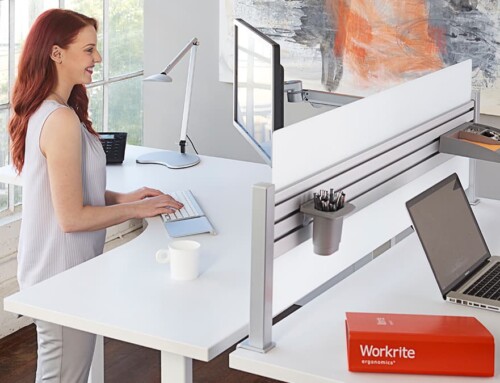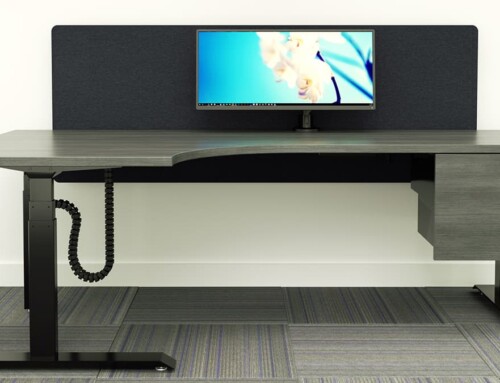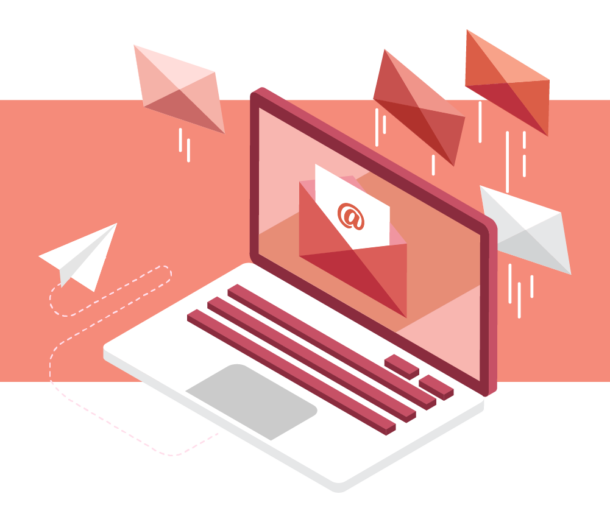Workinspired
Creative Office Interiors Increase Happiness and Productivity

Offices used to have a boring, predictable layout: a sea of cubicles or hallways lined with private offices. Workplace interior design was generally drab. The spaces were highly functional, but not interesting. Offices of the past did not attempt to increase employees’ happiness or productivity.
Now, office interiors are becoming more open, flowing, and fun. The adoption of huddle spaces and lounge-like coworking areas are slowly replacing stiff conference rooms and cubicles. The walls of private offices are coming down in favor of open office plans, while maintaining a focus on flexibility, privacy, and noise reduction.
Modern workplace interior design is not only more visually interesting, but can have a positive impact on behavior and mood. Human-centered design, natural lighting, greenery, and flexible layouts boost happiness, health, and productivity.
Creative Design
Interesting colors, textures, architecture, and furniture can boost creativity, which in turn boosts mood and motivation. This effect is increased when you have the ability to customize the aesthetics of your environment. Adding a piece of artwork or a photo that you find pleasing is great for your mood.
Lighting
Natural light (and lots of it) has been proven to increase productivity. Much like the effects of plants and greenery, warm sun-like lighting makes people happier. Large windows and skylights bring the outside in, minimizing the harmful effects of being cooped up inside for 8+ hours a day. Personal desk lights that use LEDs in a warmer tone allow people to personalize their space, providing light where and when they need it. This kind of lighting is also better for the company as it reduces energy costs by using light more efficiently.
Delegated Spaces
Modern office design includes a variety of spaces, giving people flexibility and choice. Multi-use environments that are functional and comfortable allow employees to change their scenery based on their own work style.
Relaxation
Workplaces are beginning to come around to the idea that employees need time and space to relax at work. While some are adding napping pods, others are simply creating lounging space that makes the office feel like a home.
Quiet
With an open office environment, things often get noisy. Providing quiet spaces for people to do deep work is imperative to maintain employee satisfaction and efficiency. Creating a culture that values privacy and quiet time will boost use of these space, making everyone feel welcome to choose the environment where they work best.
Collaboration
Conference rooms are slowly being replaced by interesting collaborative environments that feel more like your local coffee shop than your average office meeting area. Spaces like this encourage people to brainstorm and innovate, solving problems in creative ways.

Hot Desks
Activity-based work and shared workspaces allow employees the flexibility to change their working environment on-demand. Without assigned desks, people can move around freely, bringing the flexibility of remote work to the office. This setup works well for some people but not for everyone.
Ergonomics
Workstations that adjust and move to fit the worker are great for happiness, health, and productivity. Sit stand desks allow people to get more movement in their day, increasing health and energy. More energy makes people more engaged and productive. Ergonomic office furniture helps workers adjust their equipment to reduce fatigue and risk of injury, which allows them to be more productive. With office environments that are made for the humans that use them, employees and companies reap the rewards.
Technology
Modern office spaces have to constantly adapt to changing technology. As employees spend more of their time working remotely, the use of laptops in the office increases. As work becomes more digital, the workers’ physical space becomes more sparse and employees can freely move with just a laptop in hand. Technology in the office will continue to change, and work environments will have to change with it.





Connect with Us